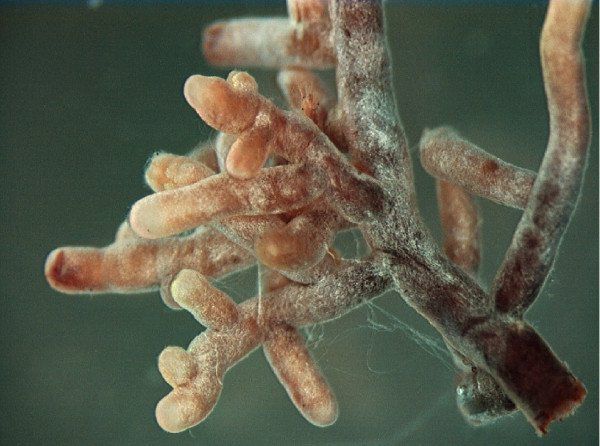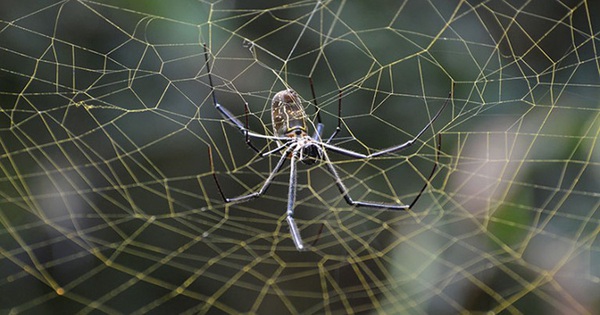Soil is a treasure for scientists who are searching for actinomycetes to cure cancer
Land is an invaluable resource. That proposition can be understood in many different ways. You can grow crops on the land, build a house, rent it out and even sell the land for money. But for a group of scientists hunting for compounds with medicinal properties to treat cancer, soil may offer a treasure: actinomycetes.
Actinomycetales are a taxonomy of the gram-positive group of bacteria Actinomycetota. They often live in anaerobic environments and grow into filaments, so much so that scientists have previously mistaken them for fungi.

Actinomycetes live in the soil, participate in many natural metabolic processes and create many compounds with medicinal properties to humans. Statistics show that about two-thirds of the antibiotics we are using today, including the first active ingredient to help fight tuberculosis, are exploited from actinomycetes.
These bacteria also help people get certain B vitamins, many anticancer drugs, and other immunosuppressive drugs. These are the invaluable resources that scientists are looking for in the soil.
However, depending on the characteristics of the soil, each land will nurture different actinomycetes, and each species secretes different compounds. There are actinomycetes that just secrete toxins and become pathogens. But the same poison many chemical companies convert them into pesticides and herbicides.
But there are also rare actinomycetes that secrete drugs, which are only found in certain areas. As in a new study published in the Proceedings of the American Academy of Sciences, scientists from the University of Washington and the University of Hawaii say they have found an extremely rare species of actinomycete in China.
These actinomycetes secrete a previously unknown compound that has the potential to be developed into a cancer drug.
Joshua Blodgett, a microbiologist at the University of Washington and lead author of the study, said the name of this actinomycete is Lentzea flaviverrucosa. They had to use a genome-based approach to find it.
Actinomycetes L. flaviverrucosa are difficult to grow in the laboratory environment and have previously been found only in certain regions of China. That is why the medicinal properties of the compounds secreted by this actinomycete have not been well studied.
Blodgett said: “This actinomycete has a very unusual biological property, it encodes unusual enzymes that promote the secretion of unexpected chemical compounds. All those secrets are hidden in a group of actinomycetes most ignored by science.”
Together with pharmacologist Chunshun Lia from the University of Hawaii, Blodgett scanned the genome of L. flaviverrucosa and discovered several potential small molecules that this actinomycete could produce. Those are ring-shaped molecules called piperazyls. This molecule was previously known as a useful substrate for drug synthesis.

However, using a series of advanced techniques, the researchers went on to discover that L. flaviverrucosa actually produces up to two structurally different piperazyl molecules, not just one. And what’s special is that both of these newly found compounds are made from a single gene, in what scientists call a “supercluster”.
“At a high level, it appears that one region of the genome can produce two different molecules.”, Blodgett said. This is particularly unusual, because as we all know, each gene in an organism acts as a blueprint for a single protein or molecule.
The surprises with L. flaviverrucosa really didn’t stop there. Blodgett said that one of the two piperazyl molecules that actinomycetes produces has a molecular structure that is completely unlike any of the compounds previously described. It consists of two hexagonal molecules that join together to form an asymmetrical doublet.
“Nature is healing two different things together” said Blodgett.And it turns out, when you combine A with B, it turns into something more powerful. It actually has medicinal properties against a number of different cancer cell lines.”
This was confirmed by Chunshun Lia when testing piperazyl, secreted by actinomycetes L. flaviverrucosa, on several human cancer cell lines.

The scientists’ new study was carried out in light of the growing global burden of cancer and the global antibiotic resistance crisis.
According to a new study published in early 2022, antibiotic-resistant infections have become the third leading cause of death worldwide. Meanwhile, cancer remains the second leading cause of death killing 10 million people a year, behind only cardiovascular disease.
Rare actinomycetes such as L. flaviverrucosa are highly anticipated in the search for anti-cancer molecules and even new antibiotic compounds.
Of course, we must not forget that, successfully testing the compound L. flaviverrucosa produces on cancer cell lines cultured in the laboratory does not mean that it will work immediately in patients in clinical environment.
Potential drug candidates take decades to go from the lab to the outside clinics. From the time scientists discover a new compound to when it is actually turned into pills for patients is a long way.
Many of those tests will end up failing. However, at least for now, we know scientists are on the right track with these rare actinomycetes found. They are invaluable resources in the land that humans can exploit.
Refer Sciencealert, Sciencedirect
at Blogtuan.info – Source: genk.vn – Read the original article here


